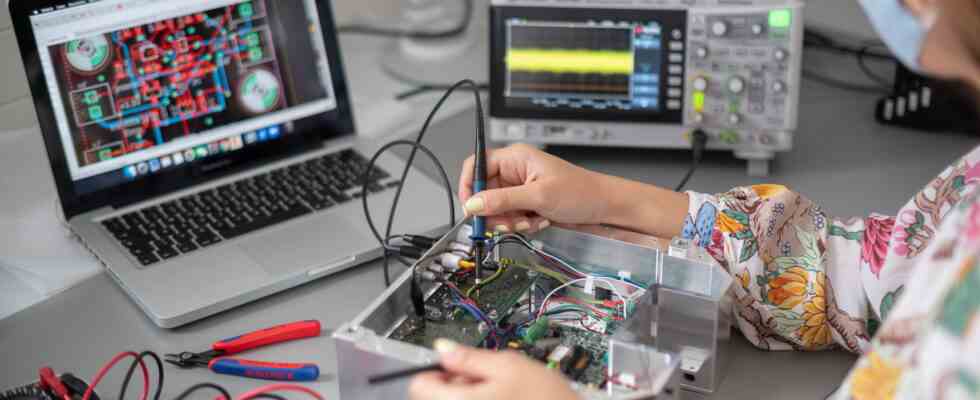Status: 08.11.2022 10:45 a.m
The participation of women in inventions has steadily increased in Europe over the past decades. Nevertheless, patent applications remain clearly male-dominated. In comparison, Germany comes off particularly badly.
The proportion of women among inventors in Europe remains very low. Less than a seventh of those involved in an application to the European Patent Office (EPO) between 2010 and 2019 are women. That’s going out a study by the Munich authorities out. With a rate of ten percent, Germany is at the bottom of the European list – Europe-wide it is 13.2 percent. Behind Germany are only Austria (8.0) and Liechtenstein (9.6 percent).
Latvia, among other places, has a much stronger representation of women. The proportion here is 30.6 percent. Portugal (26.8 percent), Croatia (25.8 percent) and Spain (23.2 percent) follow. France is also well ahead of Germany with 16.6 percent. Internationally, China with 26.8 percent and South Korea with 28.3 percent leave the Federal Republic far behind. The USA also fared better with 15 percent. Only Japan is just behind in the group of countries with the highest patent volumes with 9.5 percent.
Northeast women involved in more inventions
According to the EPA, there is a clear north-south divide within Germany: the proportion of female inventors is lowest in Baden-Württemberg (7.5 percent) and Bavaria (8.0), in Mecklenburg-Western Pomerania (16.5) and Hamburg (16.4) highest.
As an explanation, EPA researcher Ilja Rudyk refers to the concentration of mechanical engineering and electrical engineering in southern Germany. In addition, most of the patents come from the two southern federal states. “In addition, federal states such as Hamburg and Berlin have a large proportion of patent applications from universities and research institutes.”
Technology mix apparently decisive
“Although Germany is the country with the most patent applications filed in Europe, our study shows that the proportion of female inventors is particularly low,” Rudyk told the AFP news agency.
The technology mix also contributes to the weak German performance here: In the Federal Republic it is more focused on mechanical engineering and electrical engineering. At 5.2 and 7.3 percent, respectively, these two areas have significantly below-average proportions of women in patent applications across Europe.
On the other hand, in Spain and Portugal, where around a quarter of patent inventors are women, chemistry and pharmacy are predominant. The proportion of female inventors is highest in these areas. “But even if you take these aspects into account, the gap to other European countries remains.”
Higher share in academic research
In addition, private companies in Germany have an above-average proportion of patent applications – although the proportion of women is lower than in universities and public institutions. “This has to do with the fact that academic research often takes place in those technological sectors in which many women work, such as chemistry, biotechnology and pharmaceuticals,” said Rudyk. “In addition, women seem to have a preference for working in public institutions.”
However, even the universities and public institutions in Germany perform below average: While the proportion of female inventors is 19.4 percent in Europe, it is only 13.7 percent in Germany.
“Increasing Obstacles with Each Career Level”
The EPO examined the patent applications between 1978 and 2019. The proportion of women rose sharply during this period – at the end of the 1970s it was still two percent. However, “a strong gender-specific gap” remains, the patent office explained. “The proportion of female inventors is also far below that of researchers and graduates in the natural and engineering sciences.”
The study shows gaps that need to be closed “in order to exploit the full potential of female inventors in Europe,” said EPO President António Campinos. “While some progress has been made over the last few decades, more needs to be done to increase women’s participation in patents.” The promotion of women in science and innovation is a major challenge for Europe and a key factor for future viability and competitiveness.
The EPO study makes no suggestions to change the situation. The patent office explained that the results pointed to a so-called leaking pipeline: the proportion of women among the workforce as a whole in Germany is still very high, including among those with doctorates in the natural sciences and those working in research and development. The low proportion of female inventors, not only in Germany, shows that women “are encountering increasing obstacles at every career level” in scientific professions.

